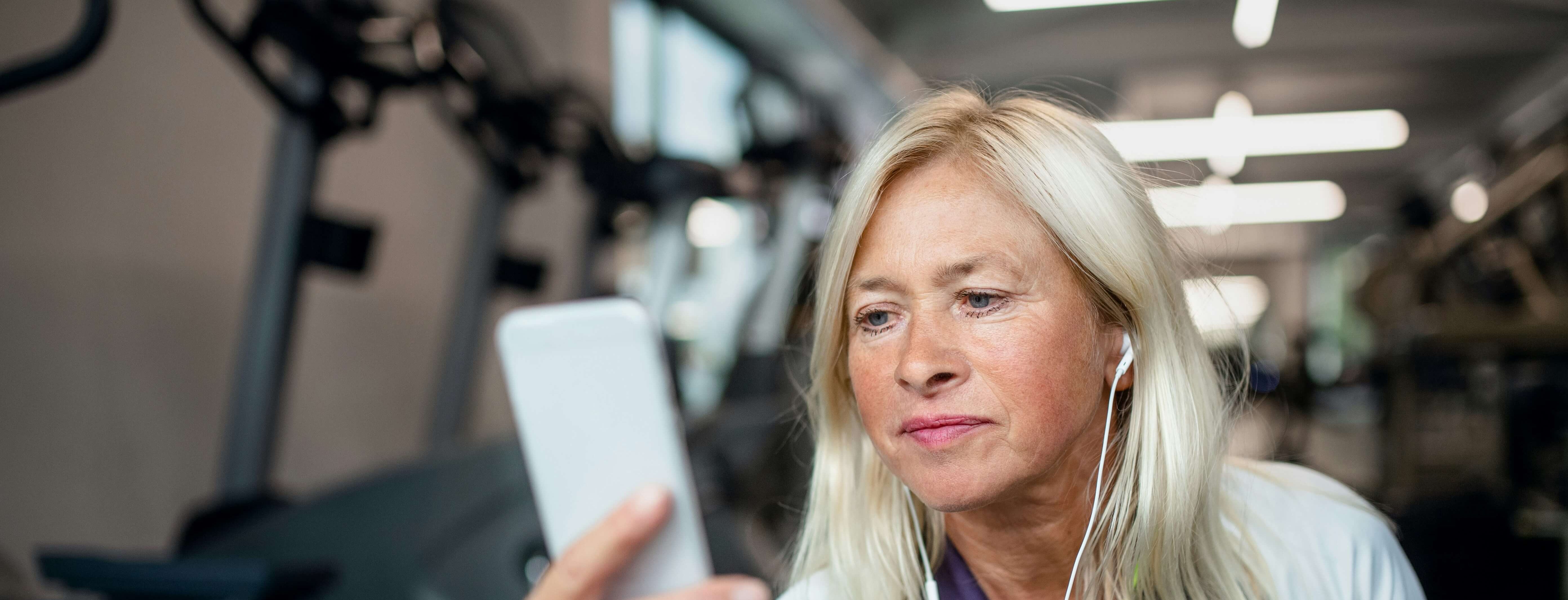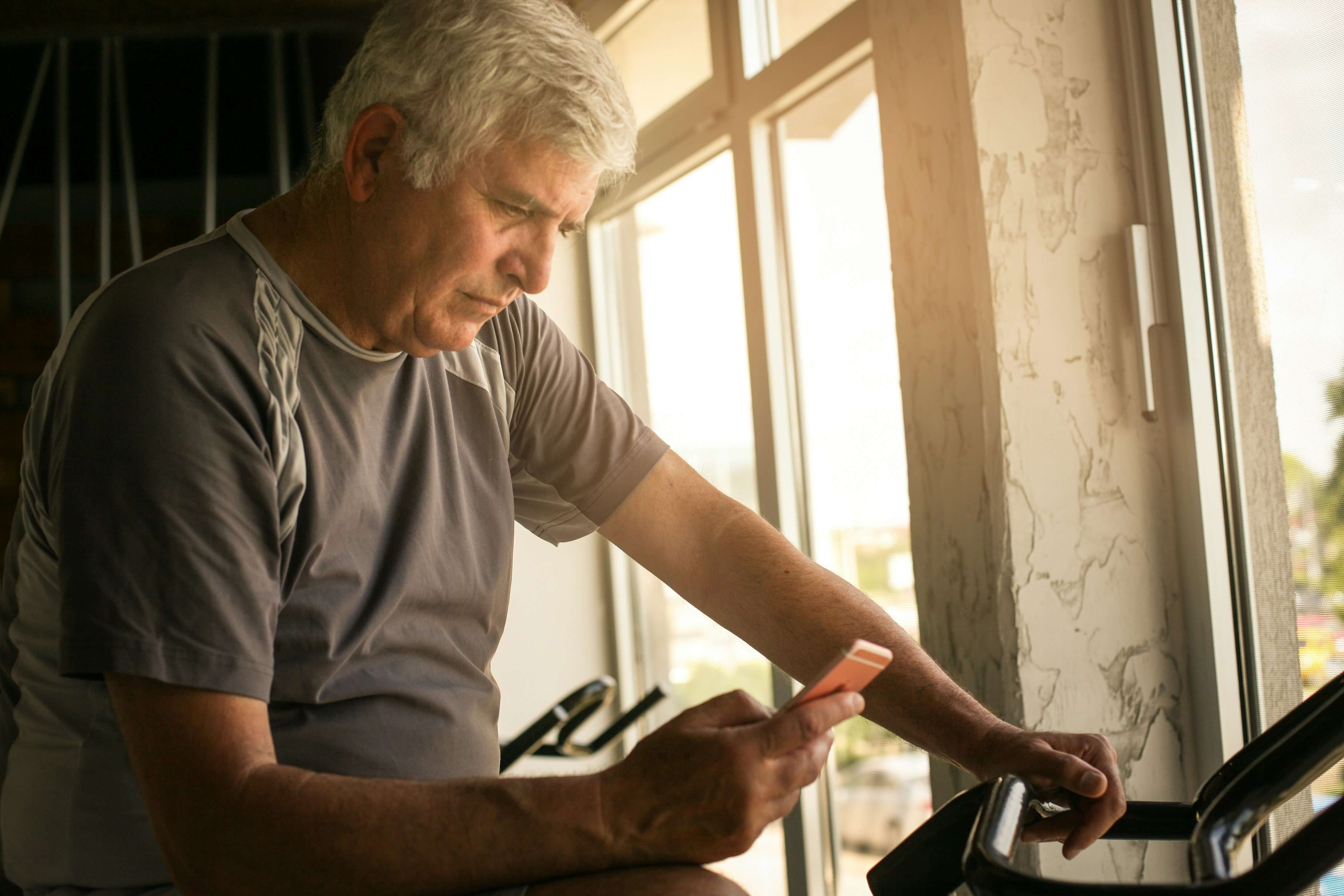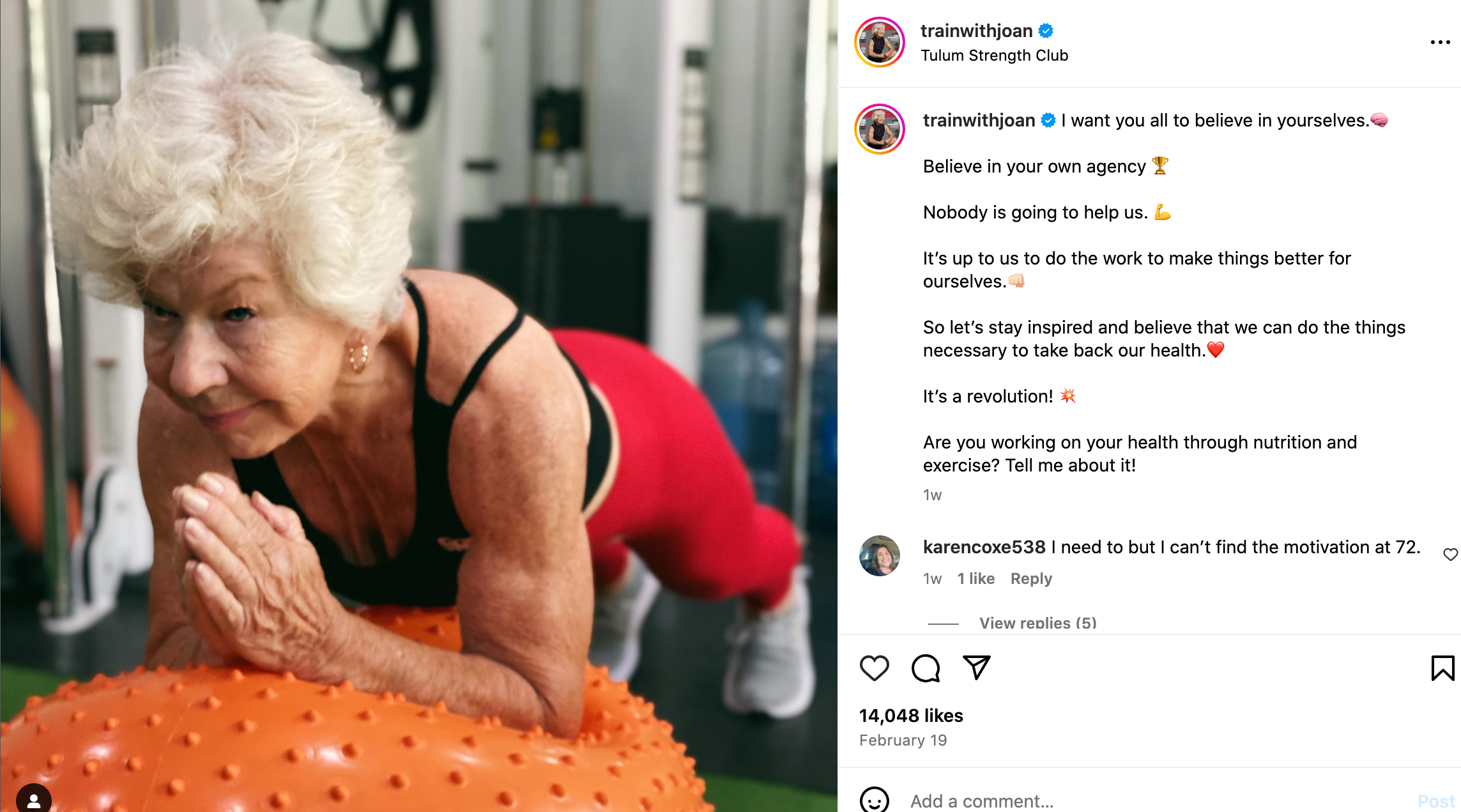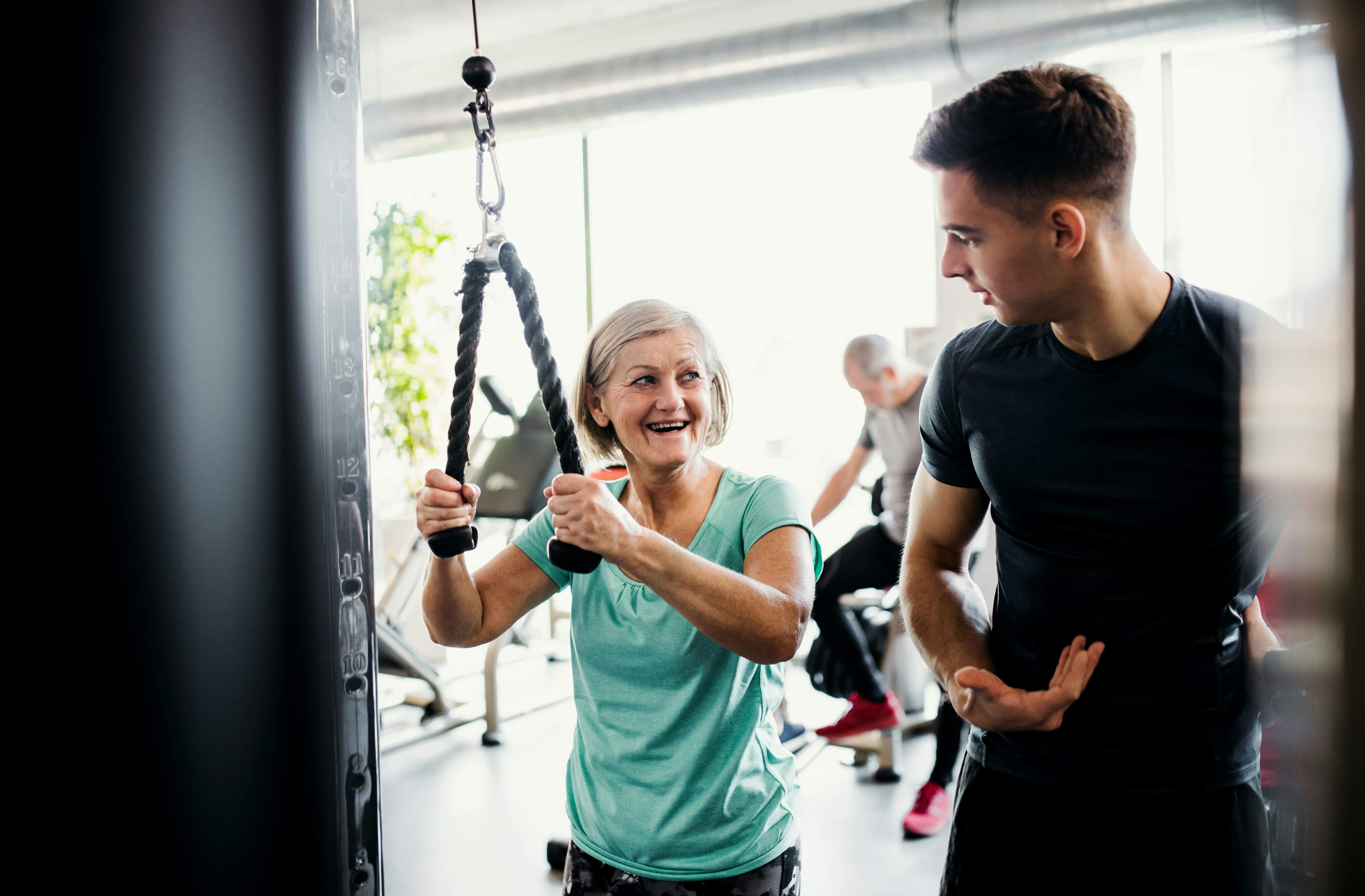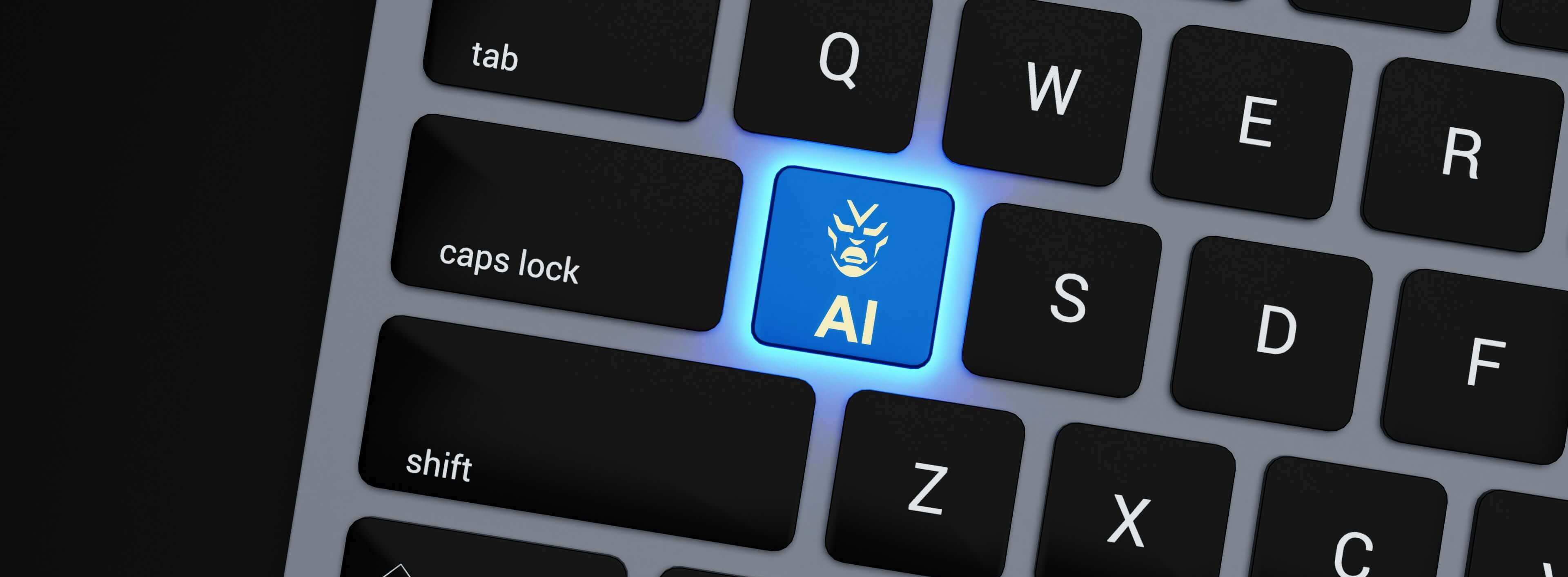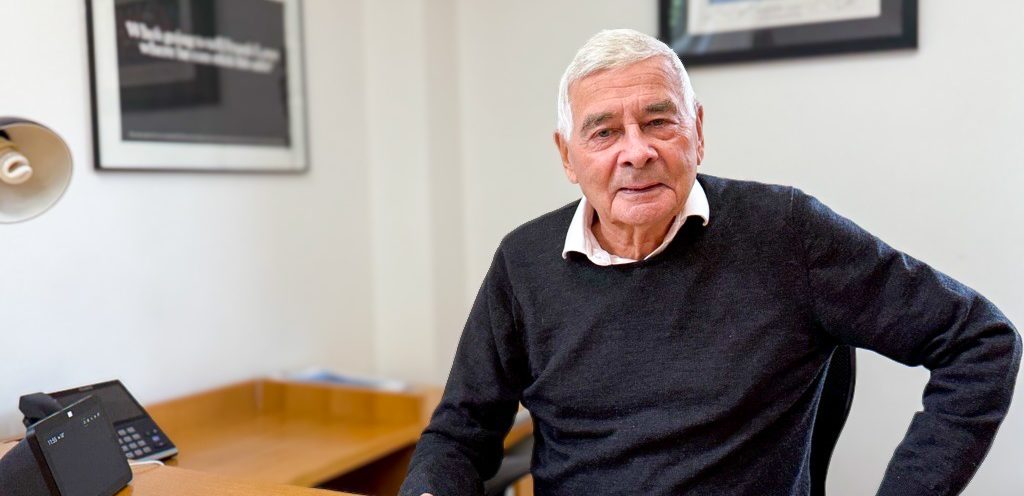As adults we are spending an average of 2 hours and 27 minutes a day scrolling on social media. If you’re horrified by that don’t read the next sentence. Teenagers spend 4.8 hours. But, it can’t all be bad – lots of us are following educational accounts where we are learning how to renovate a chateau, cook nutritious healthy vegan bowls, and dry our hair on trend, without buying the sky-high priced Dyson Airwrap. And then there are the fitness accounts and goodness there are an awful lot of them. In fact, if you didn’t know better you would think it is the number one place to go to find your own fitness guru. As we age, we need to think far more about how we’re going to stay fit and healthy longer, so social media could really be a key player in this quest?
At first glance, it seems that most of these social fitness gurus are in that age range where metabolism and youth do most of the work for them. But beyond that, if you look harder, there is happily a fitness guru for everyone, no matter who you are. Take a look at the mega success story that is 76 year old @Trainwithjoan or accounts like @the.queertrainer just for starters, but there will be gym-fulls more once you start digging.
The wellness industry, at last count, is worth a jaw dropping 5.6 trillion dollars according to Bloomberg News.
The wellness industry, at last count, is worth a jaw dropping 5.6 trillion dollars according to Bloomberg News. And while the influencers are certainly entertaining, they are also persuading us to spend our cash on whatever they are selling. The full snake oil package will probably include an app, leisure wear, a cook book and endless online sessions designed to motivate you to be ‘just like them’. But are they making any difference to our health? A recent study by a group of French scientists on 306 Millennials found that watching YouTube fitness videos only encouraged the participants who already had an exercise regime in their lives. The portion of the study who did not exercise prior to the study, experienced no motivation. “The effect could be null or even negative for non-exercising individuals who, instead, could experience vicarious exercising. Therefore, watching fitness videos, without exercising, could encourage sedentary behaviour instead of promoting physical activity”.
So, if you think it’s a positive move to follow a fitness influencer when your idea of exercise is walking to the Vauxhall Corsa and back again – don’t bother. You’re about to do the equivalent of watching a Jane Fonda workout video with a cup of tea and a Tunnocks teacake.
Photography Getty Images on Unsplash
Along with death and taxes, the only other thing we now know is inevitable is worsening health if we don’t make some key lifestyle changes in later life. If you want to maintain your muscle mass and have less catastrophic falls as you age, you need to work on your strength and balance now. Surely that should be motivation enough? But no, much like many of us with no pensions, we are whistling while Rome burns. According to Sport England whilst 29% of the rest of the adult population is inactive, when it gets to the over 55s, that figure rises to 42% and I suspect as that age creeps up so does the percentage of inactive people. So if social media isn’t getting our juices flowing what other tech innovations might work?
Gamification is nothing new, we all know someone with a Fitbit and studies have concluded that these fitness trackers do see an increase in activity for its wearers compared to those who don’t track. On the more static, but cerebral tech game side, my partner is on Duolingo genius level. I don’t think that’s what it’s called but he pays for the premium version of the app and genuinely appears to be mastering Spanish. Something demonstrated most days as we hear him whispering Spanish phrases in darkened corners or better still the ‘Ding!’ which follows a correct answer, from the other side of the often closed bathroom door. He is not however, exercising anything other than finding more places to hide in the house to continue his manic Spanish crusade. No wonder the app was recently valued at 8 billion dollars.
So can tech utilise the same types of gamification to get us up and moving? Many of us will remember Wii Fit back in the Noughties. We skied, we played tennis and did Zumba and all we needed, mostly, was a couple of controllers and a wobbly board that always got in the way when it wasn’t being used. But thanks to an early, probably well-meaning approach by Nintendo in rating the user’s BMI and body shapes in an overly simplistic way, Wii Fit ended up inadvertently fat shaming it’s users (including children). Check out reddit and tik tok if you don’t believe me. These are the same Gen Z, or Zoomers, who suffer from record levels of overwhelm, anxiety and FOMO. One product of using social media that thankfully as we age, we learn to care a little less about.
Thankfully those kinds of kinks have been ironed out in the new fitness tech and it’s sharper, prettier and much more sophisticated.
One huge success story which you may not have equated to fitness was the augmented reality (AR) success of Pokemon Go, an augmented reality game which encouraged users to go out hunting for cute little animated creatures. Searches could often take you up to 10 kilometres away to find a rare one, and in it’s first year the app was downloaded 500 million times. You can now play similar AR games where you track down dinosaur DNA, zombies, ghosts and really nice doughnuts. Sadly, this last one isn’t real, but I would play it if it was.
To get everything moving you need go no further than checking out Beat Saber, a virtual reality (VR) game which combines slick graphics, a motivational soundtrack, and a competitive incentive to get moving. Using various bits of kit the user must move their light sabers to slash at oncoming coloured boxes, dodging and weaving and waving their arms around to a thumping beat. It’s about keeping time more than anything and converts cite the communal element of playing with friends, the endurance aspect and the fact that if you play it well, you are getting a full cardiovascular workout.
Beat Saber, Pokémon Go and Duolingo can only be a sign of the future and researchers are studying the potential benefits of this area of technology. The Virtual Reality Institute of Health and Exercise explores innovations in gaming and health and measures the impact it can make. Entertainment and gaming technology has traditionally been equated with negative social habits such as bad diet, interrupted sleep and increased isolation. But now even gamers play while socially connected via a headset mike, making the experience far better for their wellbeing, it’s just another baby step in the partnership between health and entertainment. We already see our smart phones and computers playing their part in effective but, admittedly rather dull ways – tech counts our steps, books our check ups and orders our medication. But what we are starting to see more of is creatives and coders begin to recognise and work with what actually motivates us. We want to be entertained and we like to be playful, we’re human after all! So whether they use gamification, enhanced, augmented or virtual reality or something we’ve not even imagined yet, the space where tech can play a bigger part in helping motivate us into a better, healthier older age is wide open and is going to make someone an awful lot of money.


 &
& 
